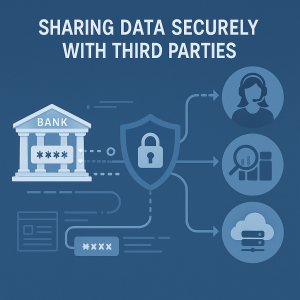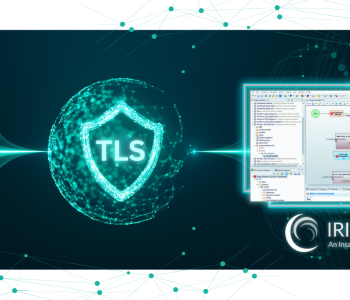
Data Masking in the BFSI Sector
The Banking, Financial Services, and Insurance (BFSI) industry handles huge amounts of extremely sensitive information each day. This data ranges from account information and credit scores to financial transactions and personal IDs.
With cyber risks accelerating and regulations tightening around it, securing this data has become a top priority. Data masking offers an essential layer of protection, enabling institutions to interact with data without exposing the actual values.
Below are key areas where data masking is actively used in the BFSI sector to support innovation, compliance, and risk reduction.
1. Protecting Test Data in DevOps and QA

Banks and insurance companies often work on modernizing their digital infrastructure—building new mobile apps, customer service platforms, or back-office automation tools. These projects require testing in environments that mimic production as closely as possible.
Masked datasets can simulate real-world scenarios rather than using real account numbers, card data, or social security numbers. This protects customer privacy while enabling development teams to test functionality, scalability, and performance accurately across systems.
Test data realism in masking is achieved with static data masking functions like format-preserving encryption or scrambling, as well as pseudonymization and blurring which anonymize values while maintaining their original appearance. In relational database testing, equally important is the preservation of referential integrity in the masked test schema.
Where there are multiple databases or even disparate data sources, consistent value masking with deterministic functions is possible through the application of rules to like data. Like data can be discovered across sources and have the same function applied as a rule.
Most of the use cases in the BFSI market for IRI data masking tools fall into this broad category. For example, several regional banks in the US and federal financial ministries abroad use the IRI FieldShield data masking tool to classify and consistently de-identify non-public information (NPI) like account numbers and amounts, as well as personally identifiable information (PII) in lower environments where realism and referential integrity matter.
Realistically masked data is also important in DevOps and quality assurance projects that can involve masked subsets or documents in PDF and MS Office formats, and/or with PII embedded in images. Data masking tools like IRI DarkShield can find the data in these sources as well and apply the same masking rules across structured, semi-structured, and unstructured test targets.
2. Sharing Data Across Business Units

BFSI companies are often large, distributed, and compartmentalized. Data routinely moves between departments for risk analysis, customer segmentation, and fraud detection. This internal data movement increases the surface area for potential exposure if shared without precautions.
Data masking ensures that only non-sensitive or anonymized versions of data are shared within the organization. Role-based masking and selective redaction allow teams to access the fields relevant to them, without accessing full or identifiable records.
There are a number of ways to mask specific classes of data in on-demand scenarios while leaving production data alone. These include:
- Dynamic data masking – where queries against RDB columns are intercepted and evaluated for authorization, and redacted where not, per methods like these
- Dynamic data unmasking – where production data at rest is encrypted, but API calls by authorized users reveal decrypted values, per this example
- Incremental data masking – where source rows being inserted, updated or deleted are masked or removed from target tables in real-time, per this method
- Shared subsets – where files are masked during filtering for specific uses, or smaller referentially correct table snippets are masked during the subsetting process, like this.
3. Mitigating Third-Party Risk

Outsourcing and vendor partnerships are widely used in BFSI, where credit bureaus and call centers to IT services and compliance audits, are common. However, the sharing of sensitive datasets with external partners, even under contractual agreements, represents considerable risk.
In fact, any publicly reported data breaches affecting financial institutions result from cyber attacks or insecure access to their data held by third-party data processing partners. Each week, IRI posts such data breaches and their potential for nullification through masking on its LinkedIn page here.
Masking the data before sharing allows third parties to work with the data they require access to, without receiving sensitive customer identities or financial records. This gives you a proactive approach to reducing risk without sacrificing operational effectiveness across your vendor ecosystems.
Selected masking of data discovered through classification in a process like this can be applied to any data in relational or NoSQL database collections, documents, images, and other files destined outside your firewall.
4. Complying with Data Privacy Regulations

Financial institutions must comply with industry regulations like GLBA, PCI DSS, SOX, and various data privacy laws like the GDPR, CCPA, PIPEDA in Canada and the DPDP Act in India.
GDPR, CCPA, etc.). Most of these frameworks emphasize strong data governance, limited access, and data anonymization for use cases beyond the primary business need.
Data masking plays an important role in helping institutions meet compliance obligations. Redacting credit card numbers or tokenizing personally identifiable information are examples of masking approaches that can be implemented according to specific regulatory requirements, like the GDPR “right to be forgotten.”
You can learn more about masking for compliance from these IRI resources:
What Is the Payment Card Industry Data Security Standard (PCI DSS)?
Navigating DPDPA Compliance
Strengthening GDPR Compliance
Right to Erasure Requests
Again, using realistic masking functions like FPE and pseudonymization can also preserve the usability of data for testing and analytics, along with compliant anonymity.
5. Securing Cloud Migrations, Big Data, and AI Initiatives

With the growing adoption of cloud platforms and big data tools, BFSI companies are increasingly leveraging cloud-based infrastructure to manage everything from customer insights to credit risk models. However, using production data in cloud environments can be risky.
Masking sensitive elements before migrating or analyzing data ensures that cloud tools and services can still perform effectively without ever accessing actual customer data. This is especially critical when working with external data lakes, AI/ML platforms, or global data teams.
For more information, see these Bloor Research articles and the IRI approaches on point in:
IRI Data Migration and Modernization
Data Governance and Security in the Age of AI
A Smart Investment in Data Governance
In the case of the BFSI sector, data masking is not just limited to data privacy. It is integral to the broader agenda around governance, operational resilience, and digital innovation. Masking enables both compliance and growth by safeguarding sensitive information without diminishing its utility for development, analytics, and collaboration.
For more information on data security, data privacy laws, and data masking concepts, visit the IRI Data Education Center at: https://www.iri.com/support/data-education-center. For sites using IRI software in financial institutions, visit: https://www.iri.com/customers/industries/bfsi.










